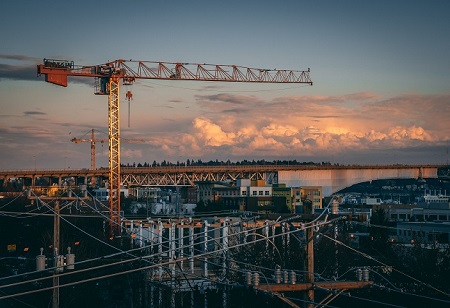
According to the New Climate Economy, the world needs to invest at least $90 trillion in sustainable infrastructure by 2030. This investment is crucial not only to replace outdated equipment in developed countries and align them with the fight against climate change, but also to promote green economic growth in emerging markets and nations. In this modern era technology plays a key role in transforming traditional approaches and promoting innovative solutions. For example, Denmark is a global leader in sustainable infrastructure due to its commitment to wind energy, innovative urban design, and strong environmental policies.
Mahabir Sharma, Chief Technical Officer, AMEA Power, said that "Storage solutions like pump-storage hydro, batteries and other emerging technologies are key enablers for renewable energy deployment and essential for achieving a sustainable, resilient energy system"
Integration of Renewable Energy
Renewable energy integrations in sustainable infrastructure development stand as the essential aspects, and technology makes the process smooth by adding energy solutions and solar wind into the infrastructure grid. Companies these days focus on sustainability on account of green energy initiatives to add value to the ecosystem. Tesla is one of the leading firms in renewable energy integration, and its creative approach extends to electric vehicles, fostering a sustainable transportation system. Its dedication to energy integration is not only changing the landscape but also accelerating the worldwide transition to a more sustainable and environmentally friendly nature.
Jimmy Yam, Vice President, Eaton Electrical, East Asia said that "Integrating renewable energy sources through technologies such as battery energy storage systems (BESS) holds promise for further reducing energy costs and these developments are shaping the future of data center energy management and sustainability"
Tech Driven Construction Practices
Modern construction practices are being transformed by tech-driven improvements to better meet sustainability targets. Building Information Modeling (BIM) makes the process smoother in planning, designing, and constructing tasks efficiently, leading to lower wastage of material, increasing efficiency in energy, and ensuring the durability of structures. Moreover, the utilization of the latest materials in the form of recycled aggregates and self-healing concrete delivers sustainable construction methods. Katerra, a tech-based construction firm, has successfully integrated technology into construction practices. They have leveraged the advanced building processes and tools to simplify and increase the efficiency of projects and also with Building Information Modeling (BIM) to lower construction schedules and analytics for a better decision-making process. Hence, with the technology, they aspire to modernize and transform the construction sector in order to make it more efficient, sustainable and cost-effective.
Climate Resilience through Advanced Monitoring
Nowadays, technology plays a significant role in monitoring and dealing with climate-related risks and seeking more profound insights into the technical aspects, satellite imagery, remote sensing, and tools related to modeling that assist in evaluating weaknesses and framing up tactical strategies to increase resilience. When it comes to accurate monitoring, it enables receiving the response on time and adaptation measures, making sure the infrastructure can resist climatic challenges.
The tech giant IBM has been dealing with several environmental and climate-related projects by harnessing its skills and competence in AI, cloud computing and data analytics.
Intelligent Transportation Systems
The need for well-structured and sustainable transportation infrastructure is paramount to conserve the environment and for economic development. Intelligent Transportation Systems helps lower emissions and congestion and also improve traffic by leveraging technology. Relying on technologies such as connected vehicles, intelligent traffic lights and real-time checking leads to an efficient and sustainable transportation network.
For instance, Microsoft supports sustainability in transportation through the use of cloud-based solutions and services that can be harnessed for ITS applications in the form of data analytics, traffic management and route optimization to lessen the environmental effect pertaining to transportation systems.
Transformative Technologies in Sustainable Water Management
Transformation technology is an unavoidable part of sustainable water management and an essential aspect of infrastructure development. Sensor-based irrigation systems, cutting-edge wastewater treatment, and smart water grids contribute to systematic water usage and conservation. These transformations help mitigate the effect of lowering pollution and shortages of water and encourage the utilization of water resources in several sustainable projects.
Nestlé, the Swiss multinational food giant, has taken an initiative named "Nestlé Commitment on Water Stewardship," which portrays the company's take on sustainable water management. The commitment also includes tasks to enhance water use efficiency in its operations, assist communities in water management and be a part of collective action to address water challenges.
In a nutshell, technology is growing at a fast pace and positively impacting the progress of sustainable infrastructure development and apparent transformation. The success relies on how integrating the advanced technologies will reshape the landscape of infrastructure projects across the globe. It is high time to embrace a rounded approach that comprises innovation, efficiency and technology, which acts as a catalyst for the creation of long-term infrastructure, opening the way for an environmentally responsible future.
We use cookies to ensure you get the best experience on our website. Read more...